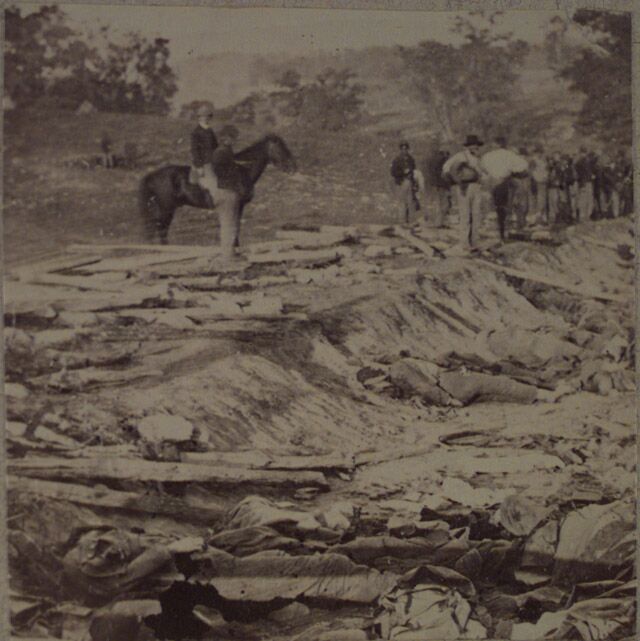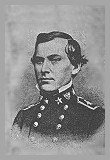| While
Hill's men were convinced they would see some rest now, unknownst to them,
fifteen miles away, Lee's Army was in trouble. Joining with Jackson's forces
in Sharpsburg on the sixteenth, Lee found his force of 25M men facing 87M
troops under McClellan. Throughout the 16th, Lee situated his men, with Jackson's
forces on the left, and Longstreet on the right. Backed up against the Potomac
River and surrounded by McClellan on all sides north, south, and east, Lee
realized his only avenue of escape across the river was the Boonsborough
Turnpike. Whatever happened in the desperate fight approaching, the turnpike
had to held. McClellan, the consistant slow poke, could have probably crushed
Lee's Army had he sent his troops in that evening. Lee was unorganized and
badly outnumbered. But even with the intelligence he had, McClellan failed
to move with determination and that evening the two armies faced one another
in a slight rain. The next morning, Lee sent work to Hill to bring up his troops as fast as possible. Leaving the 35th Georgia and the rest of Thomas' brigade in charge of the stores captured, the rest of Hill's brigade began marching at 7:00 am that morning. Moments later, miles away, the Union Army began to attack Lee. First Jackson was hit on the left. At about 10:00 am the Union attacked Lee's right. The right wing, straddling the so important Turnpike, having been thinned by troops called to Jackson's relief on the left wing, was now running low on manpower. Lee rushed what troops he could to their relief, but it wasn't near enough. The right began to be pushed back. No matter what Lee tried, the right flank was crumbling to overwhelming Union pressure. Many observers have concluded that the afternoon of September 17, 1862, was the closest Lee came to loosing the entire war. With his only avenue of retreat about to fall under control of the Union Army, Lee was gravely worried.
Sunken
Road...September 18, 1862 (taken as both Armies, under truce, bury the dead.)
Lawrence Branch courtesy General Officers of the Civil War
To
the southwest, Thomas' Georgian's in Harper's Ferry, were fortunate in that
they missed the single bloodiest day in American History. |


